New ritual: my local comedy club
How did I miss that fun for so long? Also the new luxury pyramid, fighting cynicism, a detail in a Jacquemus show, and the best French singer alive.
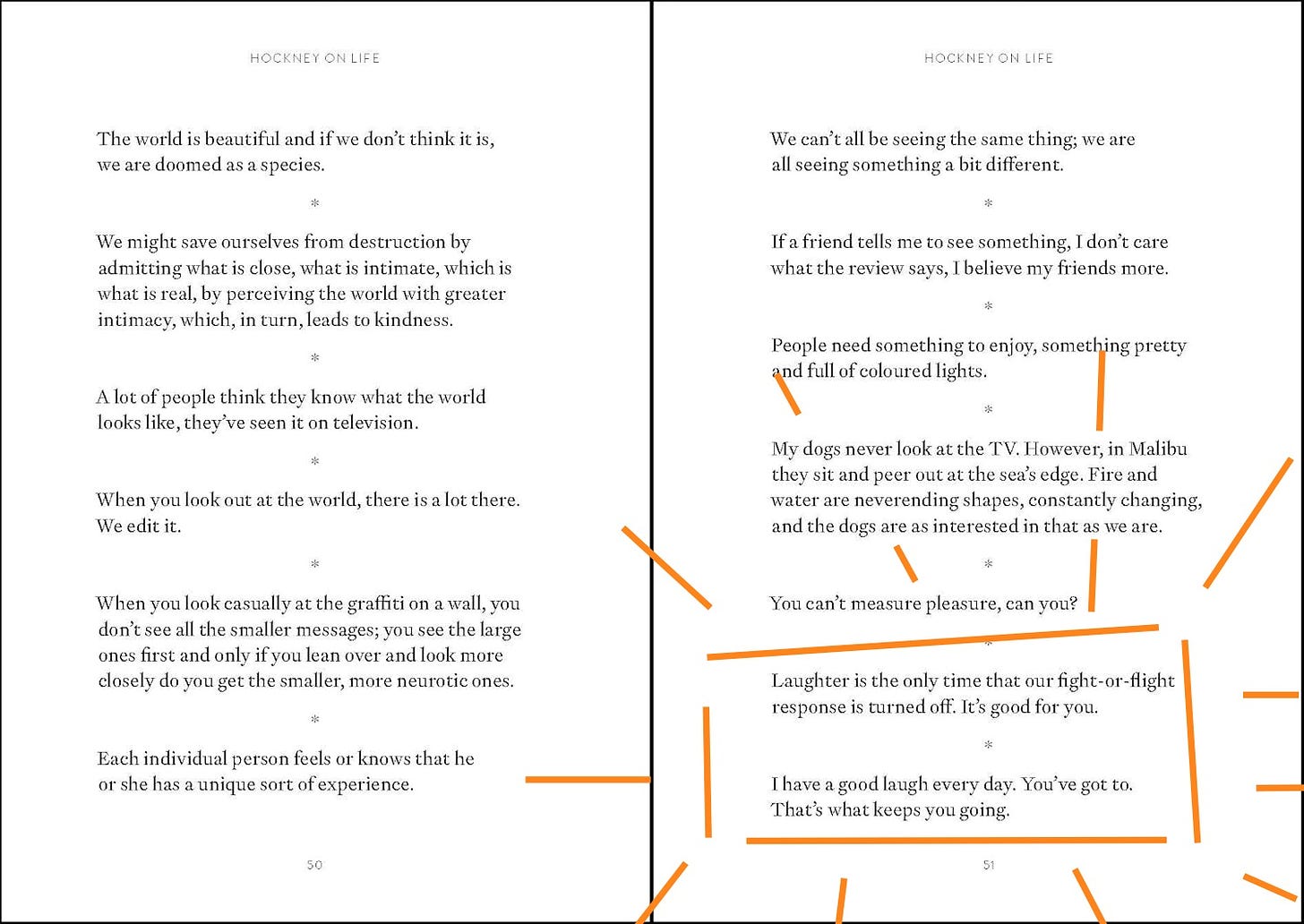
I go to stand-up. Sometimes. But I had never been to comedy clubs before.
What a mistake. Since I visited my local comedy club a few months ago, I promised to return as much as possible. And I do. SO underrated. A monthly or even weekly booking is not extravagant. Here’s why:
Who can say they've had enough of a good laugh in their week?
Tuesday becomes an exciting day.
I highly suspect it has strong mental health benefits – I can feel it.
Name a better sub-$20 social experience that opens to new perspectives…
and double up as a storytelling masterclass.
It is an excellent practice to be less judgmental, cynical and more loving.
On rotation, 6 to 8 performers. All different, all complementary. The grandma and the 21-year-old student. The tradie, the intellectual, the outlaw biker, the lunatic, the depressed, the Chilean immigrant, the redneck – the whole society gathered on stage.
You experience a spectrum of worldviews in just an hour – far beyond what any solo show could offer.
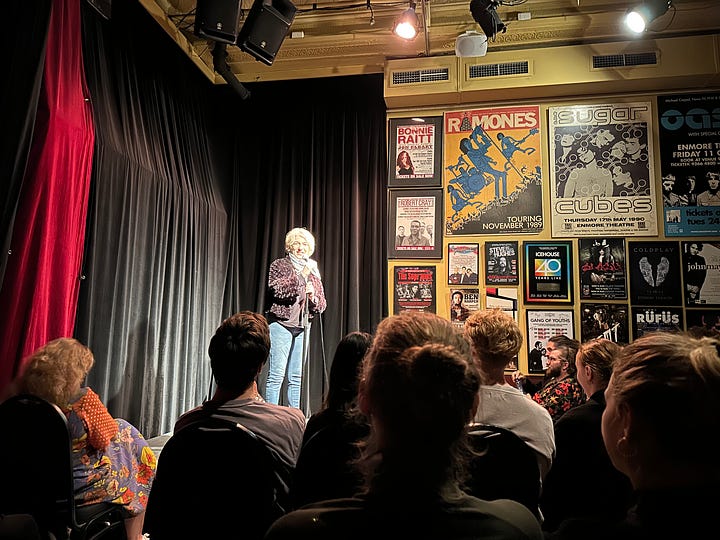
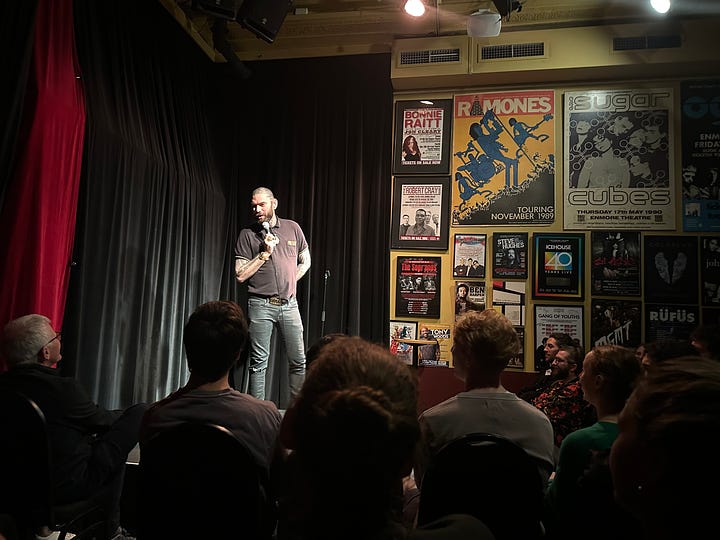
I now try to bring friends as I realise many were just like me: local fun virgins. And guess what? They all leave the club with a sparkle in their eyes – a joy to observe.
An interesting detail: I rediscover their laugh. The extended version. Stronger, more dramatic. A beautiful thunder of letting go. It’s also sad. I should know about their sorcery edit laugh already.
That’s my whole point. We don’t laugh enough. I mean the real laugh.
I admire comedians for this reason. Their mastery of the secret sauce we all desperately need to turn off our fight-or-flight response. It might be the ultimate craft of our century.
Name an art form in which the artist exposes themselves as much. Bless you guys. We need more of you magicians to shake us up, not only to have a blast but also to let us test and question our spectrum of acceptable opinions.
Not once a year – weekly!
Laughing together in public – at ourselves, our society, our weirdness, our taboos, our tensions – is the definitive ritual for restoring a sense of community.
Read Ted Gioia’s 13 Observations on Ritual:
In an overly digitized world, people embrace with intensity the few remaining ritualistic activities available to them. Halloween gets turned into something extravagant—not just for children anymore, but adults too. The same is true of Valentine’s Day or Mardi Gras and other ritualized occasions. They are pushed to extremes because people have so few embodied rituals in the digital age.
Going to an established stand-up show touring in a large venue once a year is great, but it can’t happen if the performer hasn’t been able to rehearse, test and refine his art before… in local comedy clubs.
Also, semi-pros are a pure delight… who will never make it to big settings. They are exclusive to the lovely intimacy of the smaller clubs. You don’t want to miss them out. Many wipe down a lot of specials I saw on Netflix.
And don’t get me wrong – Ali Wong's Netflix specials are a thrill. It just won’t replace the direct experience of the ritual.
again:Genuine ritual is always embedded in a time and place, and cannot be uploaded or downloaded. Go ahead, get married online, or conduct your graduation ceremony via Zoom, but these experiences will feel hollow. The virtual world creates a hunger for real ritual in an actual physical community of human beings. No website or app can satisfy this hunger on its own.
Enough said. Go out. Try your local comedy club. Support amazing talents. Bring friends. Make it a ritual.
Rituals are not about doing something exceptional together. They are about the everyday. How can we do the most mundane of things together to help make each other’s lives more livable? –
This meme
A lot to swallow.
This reminder
Did you enjoy the roast above as a witty, referenced and tasty meme or loathed it as another try-hard condescending sarcasm built on a superiority complex?
There’s such a thin line between the required critical thinking and the nasty cynicism. A line I cross way too much to my taste. A good example? Brand initiatives in anything environment-related. I systematically see most of their moves as greenwashing. It’s an unhealthy mindset, energy-draining indeed.
Maria Popova gave a helpful and wise reminder in her 18 Life-Learnings from 18 Years of The Marginalian. The contracting force is an excellent clue I will be more aware of:
Don’t just resist cynicism — fight it actively. Fight it in yourself, for this ungainly beast lies dormant in each of us, and counter it in those you love and engage with, by modeling its opposite. Cynicism often masquerades as nobler faculties and dispositions, but is categorically inferior. Unlike that great Rilkean life-expanding doubt, it is a contracting force. Unlike critical thinking, that pillar of reason and necessary counterpart to hope, it is inherently uncreative, unconstructive, and spiritually corrosive.
The antidote to cynicism?
There is nothing more difficult yet more gratifying in our society than living with sincerity and acting from a place of largehearted, constructive, rational faith in the human spirit, continually bending toward growth and betterment. This remains the most potent antidote to cynicism. Today, especially, it is an act of courage and resistance.
Faith.
Quite a project. First step, Instead of Being Cynical, Try Becoming Skeptical by Jamil Zaki:
Cynicism and skepticism are often confused for each other, but they couldn’t be more different. Cynicism is a lack of faith in people; skepticism is a lack of faith in our assumptions. Cynics imagine humanity is awful; skeptics gather information about who they can trust. They hold on to beliefs lightly and learn quickly.
I believe in 1% for the Planet because I trust Yvon Chouinard. Could I have the same faith reading the commitments for sustainability on a green-capped Nutella jar?
Why not!
You can be a “hopeful skeptic,” combining a love of humanity with a precise, curious mind.
This tiny detail
Jacquemus's shows are stunning. And this one – shot in Hawaii – was no exception.
What’s less obvious is that it was also a best practice for a brand to tap into a culture without exploiting it.
This tiny detail tells a lot and in an era where – no cynicism – brands’ virtue signalling is at an all-time high:
At one point in the evening, they gave a native Hawaiian blessing. But it was important to the community that the sacred moment wasn’t commodified, so no one was allowed to record it with their phones. Clear lines were drawn for where the brand could and couldn’t play to fully respect the culture.
How many companies would have used this ceremony to leverage it as media? Jacquemus's smart move was to work locally with the right people within the culture, not observers.
Don’t roll your eyes, the whole approach for this show was on that note. An insider analysis you will enjoy in this must-read “culture is the client” essay. Appetizer:
Our relationship with a culture shouldn't look like a scientist peering through a microscope.
If we just passively observe from the outside, and don’t we don’t form direct, active relationships with the leaders, artists, elders, people with lived experiences that make and change a culture, how can we truly be an expert or an advocate?
Further, if we’re talking to consumers, it’s important to understand the distinction between talking to consumers of a culture, vs the people within a culture.
This song
Gustavo Fring is the best character in Breaking Bad. Right?
Would you fancy a 1996 Giancarlo Esposito? As a hot pimp? In a cool music video shot by Abel Ferrara?
That will be my convoluted hook to introduce my favourite song from Mylène Farmer – the best French singer alive.
Mastery is the best goal because the rich can't buy it, the impatient can't rush it, the privileged can't inherit it, and nobody can steal it. You can only earn it through hard work.
Thanks for your attention. Take care and have a great week ☀️




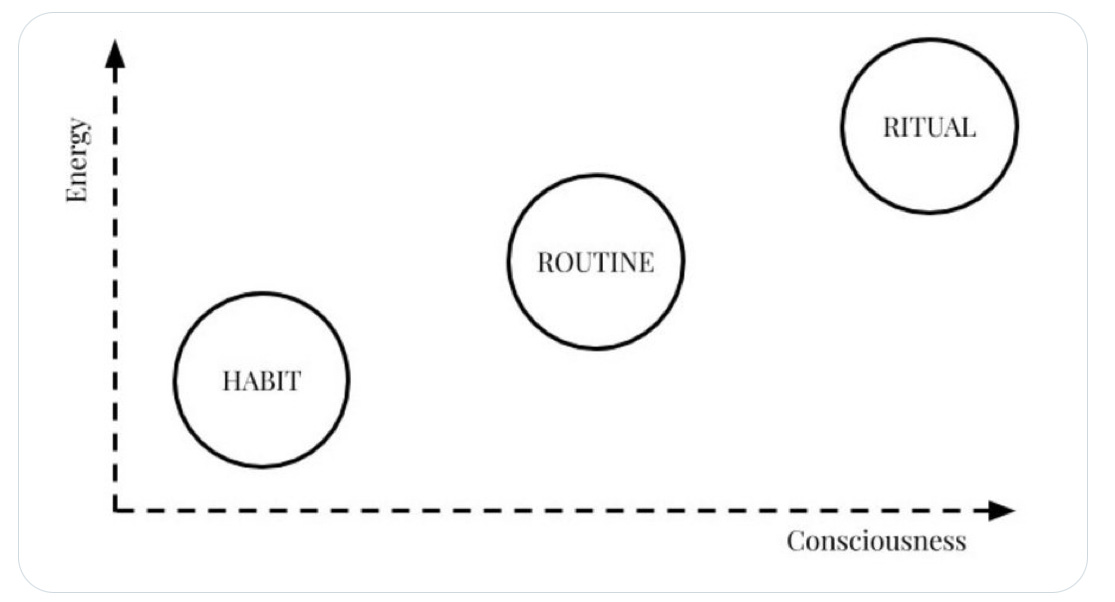
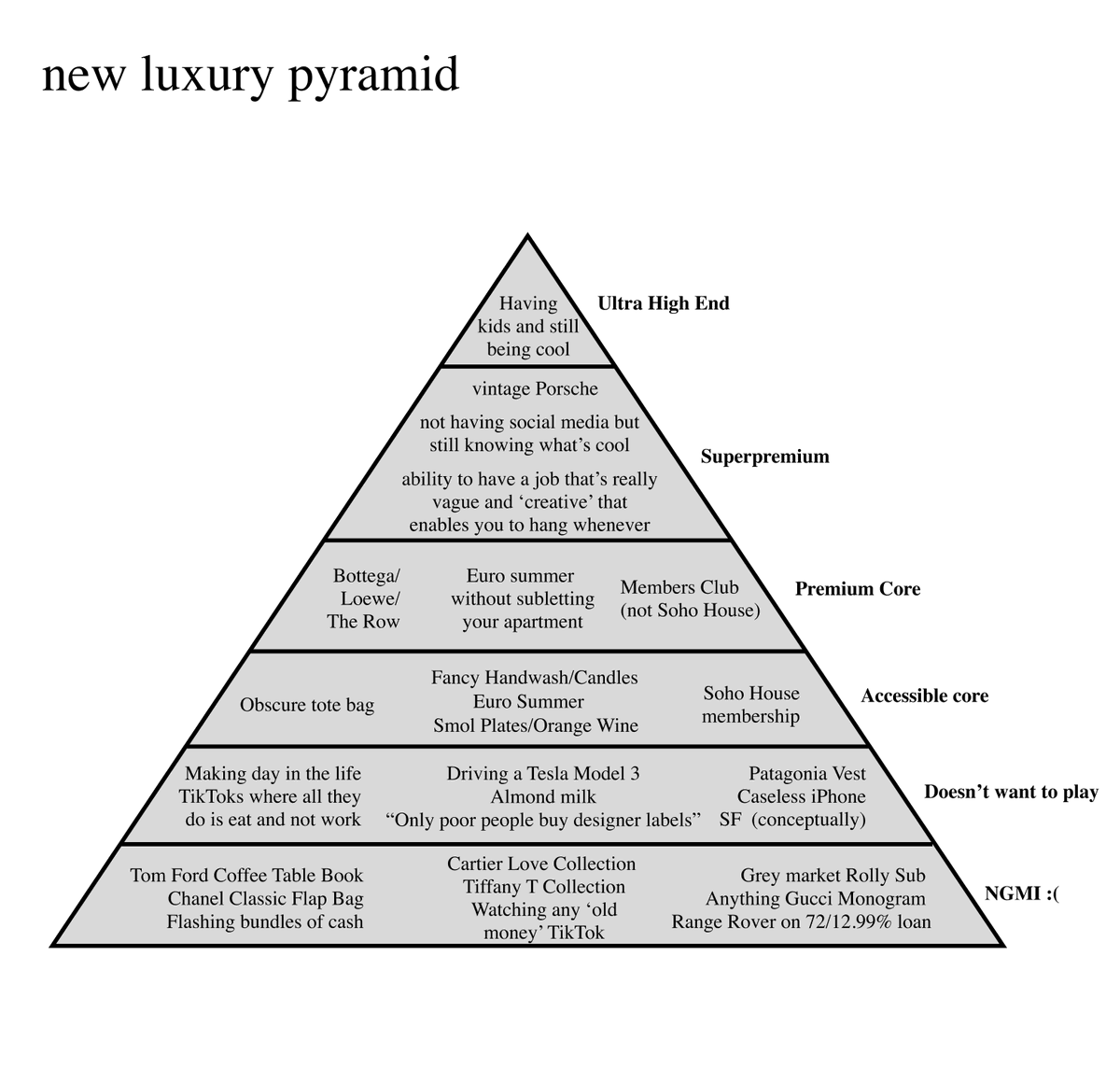

Que va-t-il rester de Youros dénué cynisme…?